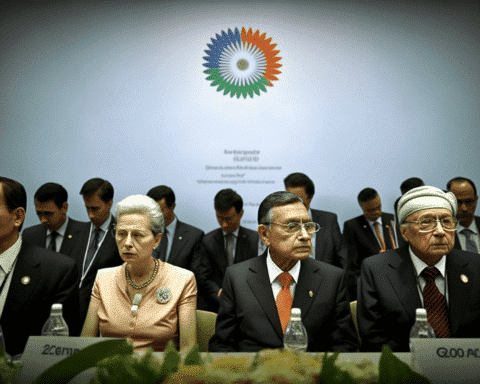India is on track to become the world’s third-largest economy by 2027, surpassing both Japan and Germany, according to projections by investment banking firm Jefferies. The country’s remarkable ascent is underscored by recent data indicating India’s climb from the ninth-largest economy globally a decade ago to the fifth position currently, boasting a nominal GDP of $3.4 trillion.
Jefferies predicts that India’s GDP will hit $5 trillion in the upcoming four years, aiming for nearly $10 trillion by 2030. This growth trajectory is supported by an anticipated annual GDP growth rate of 6% over the next five years, outpacing most large economies. Additionally, significant growth is expected in Indian equity markets, with predicted dollar-term returns of up to 10% over the next five to seven years.
Key factors contributing to India’s economic outlook include structural domestic flows and the potential for large unicorn listings. Reforms implemented under Prime Minister Narendra Modi’s leadership have been instrumental in driving India’s economic growth. Notable among these reforms are the introduction of the Goods and Services Tax (GST) and the enactment of new bankruptcy laws, which have improved India’s macroeconomic landscape and boosted stability, making it more appealing to international investors.
The ‘Make in India’ initiative, launched in September 2014, has played a crucial role in catalyzing investment, driving innovation, and advancing skills. The initiative, now in its second phase (‘Make in India 2.0’), targets an investment-friendly ecosystem, infrastructure modernization, and opening new sectors to foreign direct investment (FDI). This strategic shift towards private-led growth reflects a maturing market economy and increased confidence in India’s private sector to drive sustainable development and innovation.
India has witnessed a significant increase in FDI, registering its highest-ever annual FDI inflow of $84.8 billion during the financial year 2021-2022. This marks a substantial rise from $45.15 billion in 2014-2015 and a multi-fold increase from $2.2 billion two decades ago in 1999-2000. Multinational corporations are expected to further diversify their operations by investing in India’s expanding sectors such as technology, manufacturing, and services, potentially shifting the global economic landscape.
India’s economic ascent signifies the dawn of a multipolar economic landscape marked by both cooperation and rivalry. Adaptation in leadership and strategy is imperative in light of India’s growing economic sway. Both corporations and governments must prioritize comprehending India’s market intricacies, regulatory framework, and cultural subtleties to foster meaningful engagement and cooperation.
The strategic implications extend beyond India’s borders, presenting opportunities for enhanced regional collaboration and economic diplomacy. Those who anticipate and adapt to India’s rise stand to thrive in the unfolding new global economy. As India continues its trajectory towards becoming a global economic powerhouse, the world watches with anticipation to see how this transformative journey unfolds.




